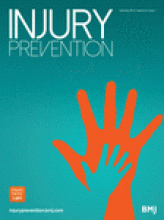By the Numbers - Mar. 14, 2016
20%
The percentage of "major National Transportation Safety Board (NTSB) investigations that identified fatigue as a probable cause, contributing factor, or a finding," according to a new report in the journal Injury Prevention -- Fatigue in transportation: NTSB investigations and safety recommendations.
The researchers reviewed 182 major NTSB investigations that took place between January 1, 2001 and December 31, 2012, and found that "(t)he presence of fatigue varied between among the modes of transportation, ranging from 40% of highway investigations to 4% of marine investigations." According to the article:
The first NTSB recommendation to address the safety risks associated with human fatigue was issued over 40 years ago, in 1972. Since then, the NTSB has issued 205 separate fatigue-specific recommendations. Scheduling policies and practices was the most common subject category accounting for 40% of all recommendations issued. Federal agencies received 54% of all recommendations, with 22% to transportation operators, and 16% to associations.
20%
The percentage of "major National Transportation Safety Board (NTSB) investigations that identified fatigue as a probable cause, contributing factor, or a finding," according to a new report in the journal Injury Prevention -- Fatigue in transportation: NTSB investigations and safety recommendations.
The researchers reviewed 182 major NTSB investigations that took place between January 1, 2001 and December 31, 2012, and found that "(t)he presence of fatigue varied between among the modes of transportation, ranging from 40% of highway investigations to 4% of marine investigations." According to the article:
The first NTSB recommendation to address the safety risks associated with human fatigue was issued over 40 years ago, in 1972. Since then, the NTSB has issued 205 separate fatigue-specific recommendations. Scheduling policies and practices was the most common subject category accounting for 40% of all recommendations issued. Federal agencies received 54% of all recommendations, with 22% to transportation operators, and 16% to associations.

